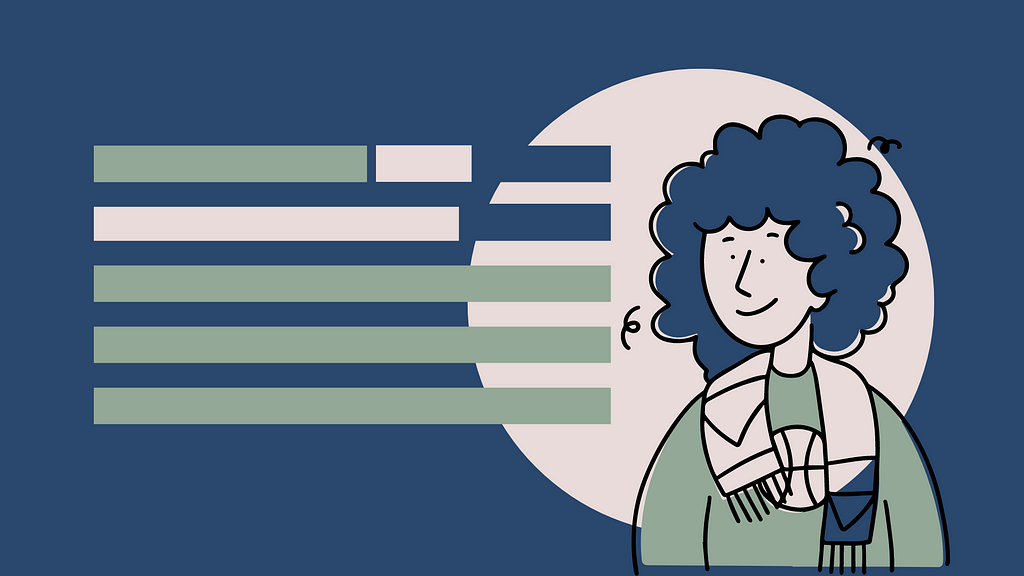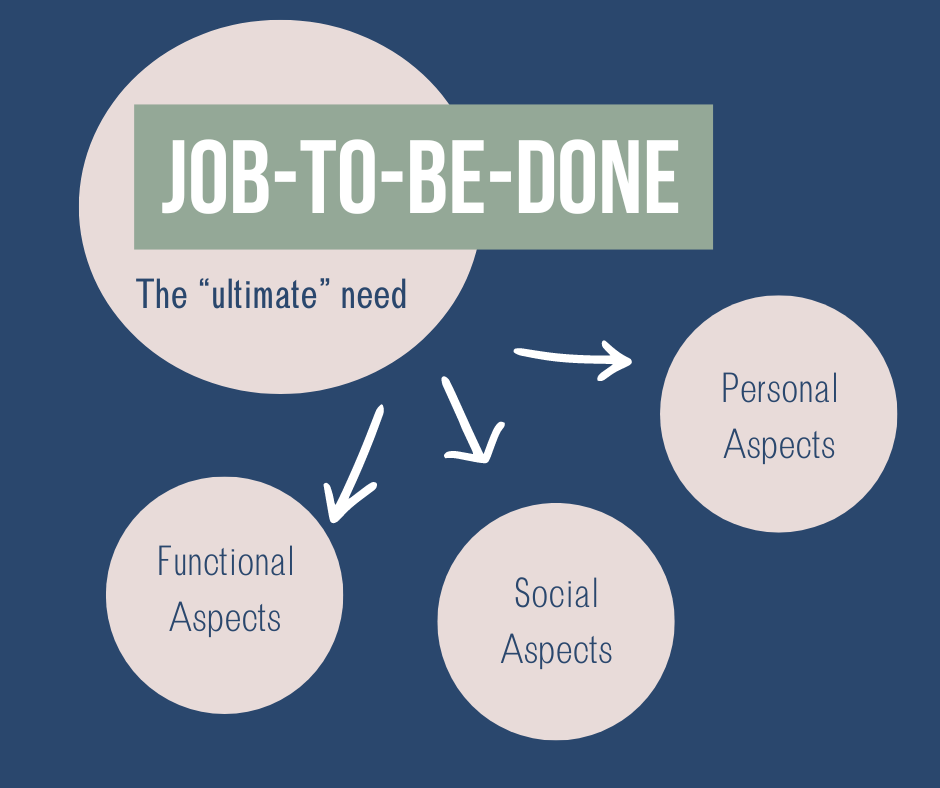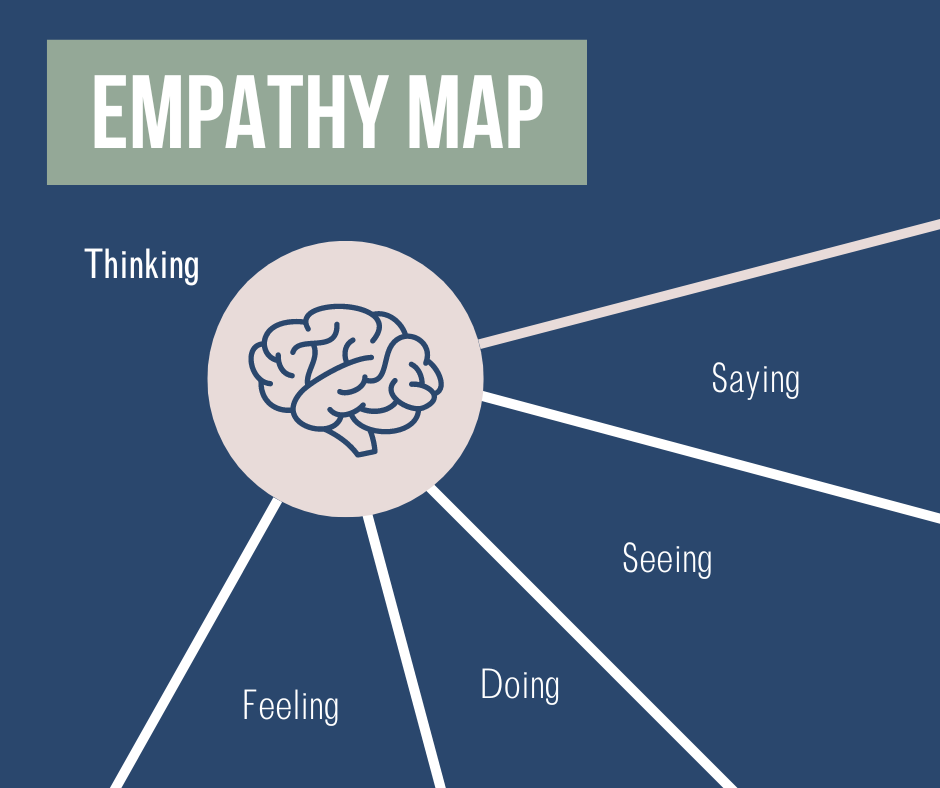Map design is a master class in understanding how users seek information
Rethinking personas: empathy and inclusion in UX design
By using more inclusive methods like Jobs-To-Be-Done and Empathy Maps, we can ensure a better understanding of the diverse user needs to create more meaningful and accessible products.

“User-centred” it’s a buzzword but I like it. The emphasis is on setting aside personal biases and listening to the users — a principle that I understood given my background in psychology. Much like in qualitative psychological research, we strive to let real people’s experiences guide us, probing their thoughts with open-ended questions to uncover real insights.
However, during the ‘Define’ phase of the first double diamond — a key stage for refining research — I encountered the concept of personas with considerable surprise. Was I to distil an entire user base into a single, fabricated individual, complete with a made-up life story and hobbies? How does this approach align with user-centred design principles when it appears to involve generalising and stereotyping users? The process seemed oddly misplaced.
Even more confusing was the enthusiasm with which my peers seemed to embrace this task, crafting elaborate backstories for these fictional characters complete with photos, occupations and family dynamics. Yet, when I raised concerns about the potential issues with this method and how it obscures real, varied user experiences in favour of a contrived ‘Alex’ (the persona I had unenthusiastically created) — the justification often returned to empathy.
An additional argument suggested that it helped focus and refine the problem, though this only served to confuse me further as irrelevant details, such as the occupation or their number of siblings likely bore no relevance to the actual problem we were addressing.
Regarding the empathy argument, I see its merit. There is substantial psychological research around empathy, both cognitive and emotional, suggesting by observing others we are able to mimic their emotions in our Mirror Neuron System, thereby better understanding other’s mental states and emotion. This theory has been applied to the emotional response elicited when you view photos, where visual storytelling enhances people’s ability to envisage and observe emotion (Joshua Sarinana articulates this really well in his article “Photography and the Feelings of Others: From Mirroring Emotions to the Theory of Mind”.) The emotional impact of seeing an image from a conflict zone is undeniably stronger than just reading a headline or hearing a second-hand account without the accompanying visual. Similarly, personifying research findings through a detailed persona, complete with a photo and backstory, might trigger a more authentic empathetic response by encouraging the researcher to visualise an individual with this emotion, enhancing their understanding of the users aspirations, pain points, and needs.
So, while there seems to be some grounding in the suggestion that personas create heightened empathy in the research process, it still risks silencing the diversity we aim to understand and the question arises are we empathising with a misrepresentation of our users?
The Problem with Personas
The fundamental issues with personas lie in their oversimplification and generalisation. In attempting to represent a user base, personas gloss over the complexity and uniqueness of individual experiences. Such reductionism is particularly problematic when personas are formulated in the early stage of the design process, setting a precedent for overlooking certain behaviours throughout the research process.
Let’s use age as an example. Personas are typically young, employed individuals, and unless a product targets a specific age group, the default choice tends to be someone aged 25–40. This means in no way are age-related requirements like reduced eyesight considered until the later phases of UX design. By primarily focusing on the persona we are preventing accessibility from being integrated into the core design process, relegating it to an add-on consideration for later down the line.
Moreover, personas often reinforce the marginalisation of under-represented groups. They typically reflect majority demographics creating cultural blind-spots, misrepresentation, exclusion and gendered ideas. Much like the age example above, we are excluding users too early in the design process, merely reinforcing existing biases and societal divisions.
There are attempts to superficially diversify personas — by altering the ethnicity or gender of their accompanying images — but this fails to address deeper differences in needs and experiences and can only contribute to further obscuring the issue.
Adding to this concern is the focus on non-essential details. Personas that emphasise trivialities like brand preferences or generic hobbies risk detracting from the core user insights — needs, challenges, and goals. The use of fabricated quotes or stock images further undermines their authenticity and use, reducing these personas to mere fictions rather than actionable tools. As Christin Roman argues in his article The Problem with Personas, it is just plain laziness. Designers go through the motions when creating personas without stopping to think about what value it brings to the design process.
This poses the question: what products are we going to create if we fail to consider the diverse user experience and misalign our focus to trivial non-essential details? Potentially exclusive, inaccessible and unsatisfactory products.
A Way Forward
I think it is important to point out a human’s natural ability to categorise everything. Its a cognitive bias that serves us well in processing the complex world we live in, but equally it underpins stereotyping and prejudice in society. Research methods that inadvertently reinforce these biases (such as personas) need careful scrutiny, or at least heightened awareness and discussion of their faults. In fact, given we are really good at categorising (which likely explains the popularity of persona creation among peers — it’s inherently easier) we should challenge this default mode of thinking by seeking alternative methods to represent and empathise with our users.
The Jobs-to-be-Done (JTBD) framework emerges as a compelling alternative to personas, focusing on the overarching goals and needs shared across a diverse user spectrum. This approach allows for a multifaceted exploration of users through emotional, social, and functional dimensions. It creates space to explore emotions on either sides of the spectrum (that would feel contradictory within a persona) and open up new user bases by prioritising objectives and not scrutinising irrelevant details.
While this framework is typically associated with marketing, it can be really valuable when applied to product design. In one particular instance, When using the Jobs-To-Be-Done framework I discovered that the personal and social dimensions were adequately addressed by the product, it was only functional aspects that fell short. Such a nuanced breakdown of the problem would not have surfaced through traditional persona analysis, which often misses these critical details and underestimates the complexity of users’ needs and their dimensions.

Another alternative is an Empathy Map which focuses into users’ thoughts and feelings, uncovering the emotional and cognitive underpinnings of their behaviours. Similar to JTBD framework this tool can reveal the deeper motivations and barriers that users face, providing a more higher-level insight for empathetic design. At the core of the Empathy Map is — no surprise — empathy, positioning itself as a great alternative to the persona.

A Spectrum Analysis, is another tool you can use in the define stage that provides a comparative overview of user characteristics outside the constraints of a fixed persona profile. This allows designers to identify and cater to a range of user needs and preferences that are not specific to a single user representation, but a varied user base. Florencia Rodriguez has shares her guidance on how to create persona spectrums.
If you like the idea of personas you can make them abstract or use an Archetype instead — remove the prescriptive family dynamics, fabricated personal details and real-life photographs. This means personas can serve as a more inclusive and flexible tool that represents a broader subset of your users.
If personas are really your jam then there’s is a lot of guidance on creating personas with a more critical approach. Princess Ventures provides an in-depth article on reducing unconscious bias in persona development, offering a methodical and practical ‘how-to’.
Even within the school of thought that prioritises behavioural insights over demographics there are differing opinions. For instance, Kim Goodwin stated ‘Personas without scenarios are like characters with no plot’. I however favour the plot-less persona as I believe scenarios are too solution focused and prevent the designer from exploring the core needs that might lie outside the scenario’s flow. I do also see that in some instances, where there are strict constraints on a project, scenarios might be more appropriate. However, it remains important to encourage designers to always question the anchoring effect that specific scenarios might impose.
I believe that the most critical aspect of working with personas is maintaining an awareness their inherent bias. Its important we see them as just one tool and they should not be used in isolation but rather used among many other methodologies and frameworks that can help inform their content and use.
The journey towards inclusive UX design is ongoing and complex, demanding our commitment and willingness to challenge established norms and methodologies. By critically examining Personas we can see both their value and their more problematic consequences. By embracing frameworks like JTBD and Empathy Maps and encouraging an environment of continuous user exploration and awareness — we can overcome the limitations of traditional personas. Let us strive for a design ethos that not only accommodates but celebrates the full spectrum of human diversity, ensuring that every user feels seen, understood, and valued in the products we design.
Further Reading:
A very detailed exploration of Personas and “Thinking Styles”: Describing Personas by Indi Young
A great article on creating persona spectrums and how to keep them accessible: Creating Persona Spectrums by Florencia Rodriguez
Here is a know-how about how to create an empathy map. Empathy Mapping: The First Step in Design Thinking
Jobs-To-Be-Done Framework is often used in business. Here is an article about how it can be used in UX by Eduardo Feo.
Article Written by Letitia Rohaise (letitiarohaise.co.uk). Product Designer with a Masters’ in Psychology. Letitia is an advocate for integrating cultural psychology into design, ensuring products are meaningful and accessible across diverse cultural contexts.
Rethinking Personas: Empathy and Inclusion in UX Design was originally published in UX Collective on Medium, where people are continuing the conversation by highlighting and responding to this story.


Leave a Reply